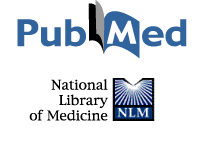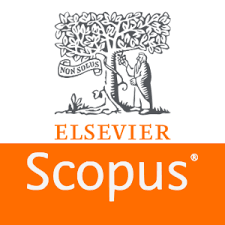UTILITY OF PLEURAL FLUID PROTEIN TO DIFFERENTIATE MALIGNANCY FROM TUBERCULOSIS
DOI:
https://doi.org/10.55519/JAMC-01-12888Keywords:
Pleural Effusion, Tuberculosis, Malignancy, Diagnostic Methods, Pleural Fluid Protein.Abstract
Background: Pleural effusion, a significant clinical problem, often poses diagnostic challenges. Tuberculosis and malignancy are the leading causes of exudative pleural effusion globally and in Pakistan. Differentiating between these two causes is essential for effective treatment, yet difficult due to overlapping clinical and biochemical profiles. Methods: This cross-sectional study was conducted at Jinnah Postgraduate Medical Center from February 2017 to May 2023, involving 603 patients with pleural effusion. It focused on exudative effusions, excluding transudative effusions, other causes, and patients with specific comorbidities. Procedures included diagnostic thoracenteses, pleural ultrasounds, biopsies, and various laboratory tests. The study aimed to assess the diagnostic utility of pleural fluid protein levels in distinguishing tuberculous from malignant effusions. Results: Out of 603 cases, 582 were analyzed. The study found significant age differences between patients with tuberculosis and malignancy. Tuberculosis was more common in younger patients, with no marked gender difference. The mean pleural fluid protein level was higher in tuberculosis (5.02±1.07 g/dL) than in malignancy (4.48±1.10 g/dL, p=0.004). A cut-off value of 5.08 g/dL for pleural fluid protein was identified as effective in differentiating between the two conditions. Conclusion: The study suggests that pleural fluid protein levels can be a valuable diagnostic marker for distinguishing between tuberculous and malignant pleural effusions. This is particularly relevant in settings where advanced diagnostic options are limited, highlighting the importance of pleural fluid analysis in clinical diagnosis.
References
1. Reddy SL, Varaprasad K, Narahari N, Bhaskar K, Varma GR, Paramjyothi GK. Clinical and etiological profile of an exudative pleural effusion in a tertiary care center. Indian J Respir Care 2019;8(1):22–6.
2. Hussein M, Thomas M, Al-Tikrity M, Elarabi A, Hameed M, Al-Adab A, Ibrahim W, et al. Etiology of exudative pleural effusion among adults: differentiating between tuberculous and other causes, a multicenter prospective cohort study. IJID Reg 2024;12:100425.
3. Gao S, Wang C, Yu X, Teng T, Shang Y, Jia J, et al. Xpert MTB/RIF Ultra enhanced tuberculous pleurisy diagnosis for patients with unexplained exudative pleural effusion who underwent a pleural biopsy via thoracoscopy: A prospective cohort study. Int J Infect Dis 2021;106:370–5.
4. Gong L, Huang G, Huang Y, Liu D, Tang X. Medical Thoracoscopy for the Management of Exudative Pleural Effusion: A Retrospective Study. Risk Manag Healthc Policy 2020;13:2845–55.
5. Petborom P, Dechates B, Muangnoi P. Differentiating tuberculous pleuritis from other exudative lymphocytic pleural effusions. Ann Palliat Med 2020;9:2508–15.
6. Ali S, Abbas M. Diagnostic evaluation of patients presenting with pleural effusion to Mardan Medical Complex, Khyber Pakhtunkhwa. Pak J Chest Med 2021;27(3):140–5.
7. Sadaf S, Noor U, Kazmi S, Noor A, Yasin M, Kanwal N. The utility of pleural biopsy in differentiating between different types of lymphocytic exudative pleural effusions. Pak J Chest Med 2021;27(1):32–6.
8. Waheed SA, Nisar A, Lail A, Lail G, Imran M, Ali J, et al. Pleural fluid alkaline phosphate levels to differentiate between tuberculosis and malignant pleural effusion a tertiary care experience. J Tuberc Res 2023;11(2):86–93.
9. Qureshi AR, Irfan M, Ashraf Z. Diagnostic Accuracy of Sonographic Septations in Tuberculous and Malignant Pleural Effusions. J Islamabad Med Dental Coll 2020;9(2):95–102.
10. Muhammad N, Saeedullah SU, Khan ZU, Ayaz M, Nabi A, Khan MW. Incidence of Pleural Effusion and its causes in Chronic Kidney Disease Patients. Pak J Chest Med 2023;29(1):25–9.
11. Sumalani KK, Akhter N, Chawla D, Rizvi NA. Visual Diagnosis of Pleural Tuberculosis and its Association with Tissue Biopsy, Culture and Xpert Assay. Pneumologie 2022;76(2):92–7.
12. Zhang W, Liu Z, Duan X, Li Y, Shen C, Guo Y, et al. Differentiating malignant and benign pleural effusion in patients with lung cancer: an 18F-FDG PET/CT retrospectively study. Front Oncol 2023;13:1192870.
13. McNally E, Ross C, Gleeson LE. The tuberculous pleural effusion. Breathe (Sheff) 2023;19(4):230143.
14. Lo Cascio CM, Kaul V, Dhooria S, Agrawal A, Chaddha U. Diagnosis of tuberculous pleural effusions: A review. Respir Med 2021;188:106607.
15. Sood S, Arya R, Dutta N, Paul A, Behera RK, Nanda RK, et al. Current Methods and Future of Tuberculosis (TB) Diagnosis. In: Dutta G, Biswas A, Chakrabarti A, editors. Modern Techniques in Biosensors. Studies in Systems, Decision and Control. Springer, Singapore: 2021; p.327.
16. Kassirian S, Hinton SN, Cuninghame S, Chaudhary R, Iansavitchene A, Amjadi K, et al. Diagnostic sensitivity of pleural fluid cytology in malignant pleural effusions: systematic review and meta-analysis. Thorax 2023;78(1):32–40.
17. Durgeshwar G, Mohapatra PR, Bal SK, Mishra P, Bhuniya S, Panigrahi MK, et al. Comparison of diagnostic yield and complications in ultrasound-guided closed pleural biopsy versus thoracoscopic pleural biopsy in undiagnosed exudative pleural effusion. Cureus 2022;14(4):e23809.
18. Aggarwal A, Kumar S, Jethani V, Khanduri S, Khanduri RS, Sharma A. Pleural fluid adenosine deaminase, c -reactive protein levels and lymphocyte/ neutrophil count ratio in differentiating tubercular and non-tubercular pleural effusion. J Cardiothorac Med 2022;10(3):1017–24.
19. Shimoda M, Hirata A, Tanaka Y, Morimoto K, Yoshiyama T, Yoshimori K, et al. Characteristics of pleural effusion with a high adenosine deaminase level: a case–control study. BMC Pulm Med 2022;22(1):359.
20. Mittal N, Das B. Role of adenosine deaminase (ADA) in etiological classification of exudative pleural effusion. Int J Res Rev 2020;7(1):401–6.
21. Choe J, Shin SH, Jeon K, Huh HJ, Park HD, Jeong BH. Features which discriminate between tuberculosis and haematologic malignancy as the cause of pleural effusions with high adenosine deaminase. Respir Res 2024;25(1):17.
22. Light RW, Macgregor MI, Luchsinger PC, Ball WC Jr. Pleural effusions: the diagnostic separation of transudates and exudates. Ann Intern Med 1972;77(4):507–13.
23. Olmo-Fontánez AM, Turner J. Tuberculosis in an Aging World. Pathogens 2022;11(10):1101.
24. Vyas Y. Pleural Tuberculosis. In: Strumfa I, Uljanovs R, Strumfs B, editors. Challenges in Pleural Pathology - Diagnostics, Treatment and Research [Internet]. IntechOpen; 2024 [cited 2025 Jan]. Available from: http://dx.doi.org/10.5772/intechopen.114244.
25. Porcel JM, Vives M. Differentiating tuberculous from malignant pleural effusions: a scoring model. Med Sci Monit 2003;9(5):175–80.
26. González A, Fielli M, Ceccato A, Luna C. Score for Differentiating Pleural Tuberculosis from Malignant Effusion. Med Sci (Basel) 2019;7(3):36.
Downloads
Published
How to Cite
Issue
Section
License
Copyright (c) 2025 Kamran Khan Sumalani, Nousheen Akhter, Dimple Chawla, Nadeem Rizvi

This work is licensed under a Creative Commons Attribution-NoDerivatives 4.0 International License.
Journal of Ayub Medical College, Abbottabad is an OPEN ACCESS JOURNAL which means that all content is FREELY available without charge to all users whether registered with the journal or not. The work published by J Ayub Med Coll Abbottabad is licensed and distributed under the creative commons License CC BY ND Attribution-NoDerivs. Material printed in this journal is OPEN to access, and are FREE for use in academic and research work with proper citation. J Ayub Med Coll Abbottabad accepts only original material for publication with the understanding that except for abstracts, no part of the data has been published or will be submitted for publication elsewhere before appearing in J Ayub Med Coll Abbottabad. The Editorial Board of J Ayub Med Coll Abbottabad makes every effort to ensure the accuracy and authenticity of material printed in J Ayub Med Coll Abbottabad. However, conclusions and statements expressed are views of the authors and do not reflect the opinion/policy of J Ayub Med Coll Abbottabad or the Editorial Board.
USERS are allowed to read, download, copy, distribute, print, search, or link to the full texts of the articles, or use them for any other lawful purpose, without asking prior permission from the publisher or the author. This is in accordance with the BOAI definition of open access.
AUTHORS retain the rights of free downloading/unlimited e-print of full text and sharing/disseminating the article without any restriction, by any means including twitter, scholarly collaboration networks such as ResearchGate, Academia.eu, and social media sites such as Twitter, LinkedIn, Google Scholar and any other professional or academic networking site.










